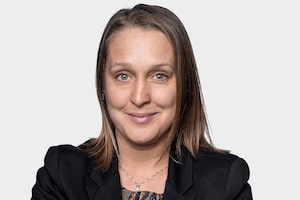Unspecified
Spring has arrived, ushering in warmer, sunnier days, budding gardens, and the start of what could turn out to be a frenzied rush to buy a house before borrowing costs rise.
House prices across the country have skyrocketed in recent years, boosted by rock-bottom interest rates that have made it cheaper than ever for Canadians to finance home purchases.
Robert McLister, a Vancouver-based mortgage planner and the editor of the CanadianMortgageTrends.com blog, says the biggest mistake people make when getting a mortgage is stretching their limits more than they should.
"People always want the biggest and best house they can afford so stretch the limits of their buying power. But buying a cheaper house will leave you with less to worry about," he said.
His advice to prospective home buyers is to be conservative in terms of what they can afford. "Do not rush to over-buy, which is hard when every property seems to have a bidding war."
Changes to mortgage application rules that kick in on April 19th, and the introduction of harmonized sales taxes in Ontario and British Columbia in July, are also likely to push people into the housing market before the expected slowdown.
Mr. McLister has these tips for new home buyers:
1) Allow five business days for financing in your purchase offer. Realtors sometimes push buyers to get preapproved and write "clean" offers without conditions. But preapprovals don't guarantee a "final" approval. Preapprovals are often just glorified rate holds. Proper financing conditions give you time to arrange an iron-clad approval before you commit to buy.
2) Start with the term. The term you pick often effects the total interest you pay more than the rate itself. Consult a professional to pick the right term from the start. Have him or her run a rate simulation to show which term would save you the most money over five years.
Is this a good time to lock in or refinance your mortgage?
3) Negotiate wisely. If your credit is strong, use the Globe's mortgage rate table at tgam.ca/mortgagerates as a starting point for rates. Ask your mortgage planner to find a lender who will beat the best rate for your province. Use a mortgage professional who compares all lenders; not just a handful.
4) Go short. Don't consider a long-term amortization (such as 30-35 years) unless you are confident you'll later have spare funds to make prepayments. A 35-year amortization will lower your monthly payments 16 per cent on a 4-per-cent, $250,000 mortgage. However, the total interest you'll pay increases 32 per cent versus a 25-year amortization.
|
More on mortgages
|
5) Tap your RRSPs for a down payment. If you qualify as a first-time home buyer, you and your spouse can each use up to $25,000 from your RRSP as a down payment. CRA will not deem that money taxable income as long as you annually repay 1/15th of the amount withdrawn.
6) Don't pay for what you don't need. Paying extra for an open mortgage, a "capped" variable rate, cash back, large prepayment options, or a 10-year term is often unnecessary. Have your mortgage professional compare the estimated interest cost of the alternatives.
7) Consider a hybrid. Hybrid mortgages are part fixed and part variable. You determine how much of your mortgage goes in each part. Since no one knows how high rates will climb, hybrids nicely diversify your interest-rate exposure.
 Roma Luciw
Roma Luciw